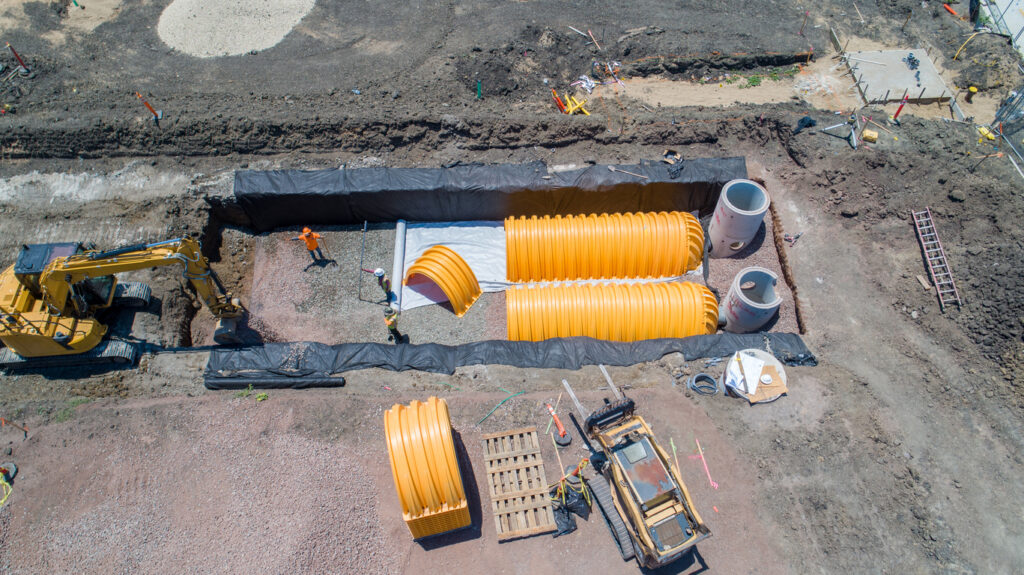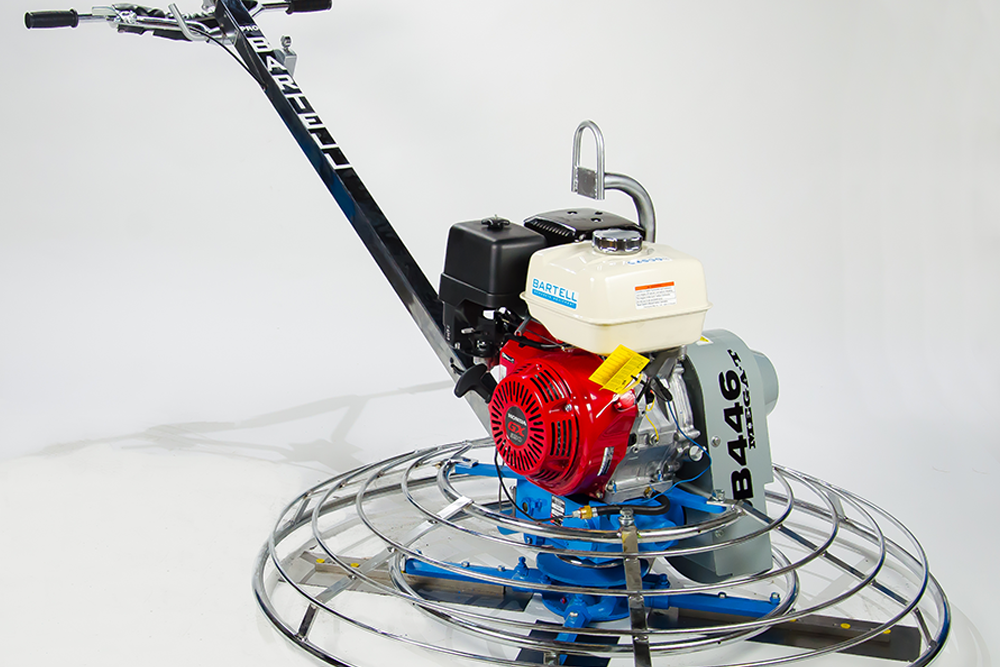Sealing PaveDrain
Salt is an important ingredient in…food and some drinks! It has also been utilized for years to help melt snow and ice to prevent slips and falls. But like most good intentions there tends to be a case of unintended consequences. Salt or liquid chlorides are incredibly hard on concrete and steel/rebar.
The PaveDrain system does not have any steel reinforcing in it, but it is made of concrete via dry casting utilizing a mold and vibratory equipment (i.e. Block Machine). This makes the PaveDrain system susceptible to salt degradation in our Northern Climates. Furthermore, not all aggregate utilized to manufacture individual PaveDrain blocks is equal. Some aggregates are more susceptible to salt, than others. How do we protect the PaveDrain system against the ravages of salt? SEALING.
In 2019 PaveDrain, LLC started requiring that all PaveDrain projects in Northern climates be sealed. Leading up to this requirement, PaveDrain, LLC teamed up with Kaufman Products to test different sealing materials and application rates. The best we branded PaveDrain Penetrating Sealer, which is a low-VOC, liquid-applied penetrating sealer designed to protect and extend the life of cementitious surfaces, including PaveDrain, by protecting them from the damaging effects of salt and de-icing chemicals without affecting the finished look. PaveDrain Penetrating Sealer penetrates to physically and chemically protect the capillaries of the concrete to protect against moisture penetration, spalling, freeze-thaw damage, deicing salts, efflorescence, and chemical erosion.
PaveDrain Penetrating Sealer chemically bonds to the PaveDrain system forming a water repellent crystalline structure. Effectiveness and long-term durability of the treated surface will be dependent on surface exposure to wear, but the general rule of thumb is sealing should occur once every 8-10 years. Over time, water beading at the surface will dissipate but the interior block substrate will still be protected. For best performance, based on the porosity of PaveDrain concrete blocks, it is recommended that 75 to 200 sq. ft. per gallon be used as an application rate. This rate varies based upon the application method.
Some people may be asking “You want us to SEAL a permeable surface? Won’t that make it…IMPERMEABLE?” PaveDrain’s response to this is, with other systems, that would be the issue. A joint filled (aka pre-clogged) permeable paver would be rendered impermeable if a sealant was applied AFTER installation. Pervious concrete and pervious asphalt would succumb to a similar fate. The PaveDrain system is different because the joints are left open, which is why you want to seal quickly after installation or immediately after being vacuumed. Due to the size of the bedding layer beneath the PaveDrain system (i.e. #57 stone), any sealant that may find its way down to the bottom of a 5.65” PaveDrain block will have very little sealant on that aggregate and will still drain at an incredible rate. Infiltration tests have proven this time and time again.

SEALED PaveDrain Block

Sealed PaveDrain Block Cutaway

Hardscape SalesMike Schmidt
Latest News

6 Must-Have Concrete Reinforcing Accessories
In construction, boosting and guaranteeing the strength and durability of concrete structures are always a plus. This is where concrete […]

Stormwater’s Buried Structural Plastic Problem
One of the most common solutions to stormwater challenges is big chambers or vaults to hold water. That is when […]

6 Concrete Finishing Tools You Will Need
Getting a smooth, polished, and professional finish on concrete surfaces requires the right set of concrete finishing tools. These tools […]

The Art Of Formwork: Exploring Essential Concrete Form Accessories
Formwork is the unsung hero of concrete construction. It provides the mold that shapes wet concrete into its desired form. […]
